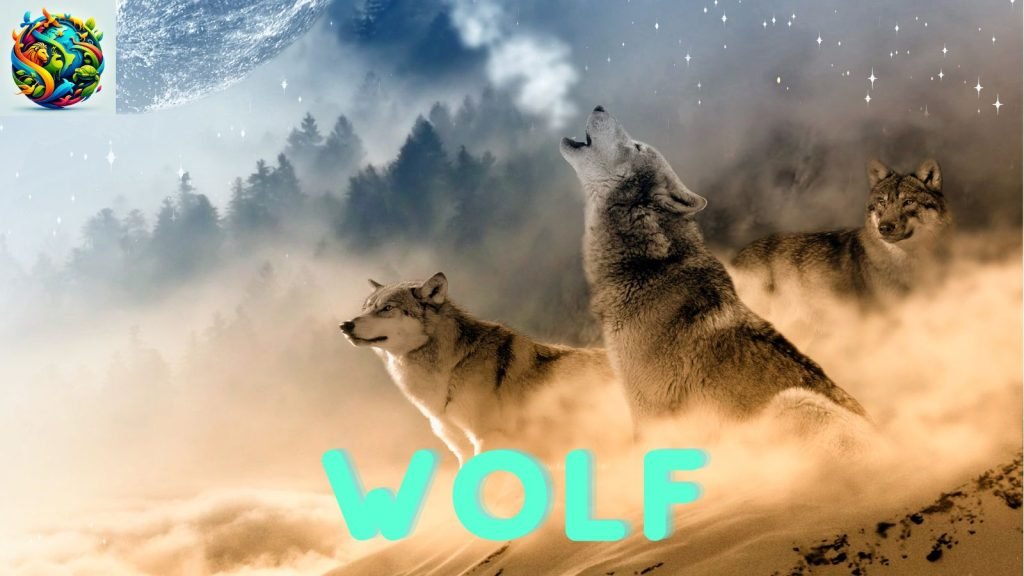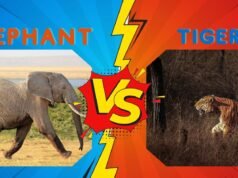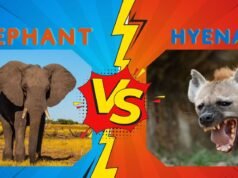Wolf and Human: A Clash of Evolutionary Titans
When we imagine a wolf and a human facing off, it’s easy to envision the raw, untamed power of the wolf against the intelligence and strategy of the human. Wolves, as wild predators, are powerful, fast, and have honed their instincts over millennia of evolution. Humans, on the other hand, are at the top of the food chain, armed with intellect, tools, and social coordination. So, who would win in a direct confrontation between the two?
In this article, we’ll explore the differences between wolves and humans, analyzing their physical strength, mental capabilities, and survival tactics to understand who would come out on top in a showdown.
Introduction: Wolf vs Human and Man’s Best Friend or Rival?
The wolf and the human are two very different animals. While wolves are wild animals known for their predatory instincts and strong sense of family in packs, humans are the dominant species on Earth, renowned for their problem-solving skills and ability to adapt to almost any environment. So, what would happen if these two came into direct conflict?
Throughout history, the relationship between humans and wolves has been complex, shifting between fierce rivalry and deep companionship. Wolves, with their sharp instincts, social intelligence, and primal strength, once stood as direct competitors to early humans, both hunting similar prey and vying for survival in harsh environments. Over time, however, a remarkable transformation occurred — some wolves gradually evolved alongside humans, eventually becoming the domestic dogs we know today as “man’s best friend.”
Yet at their core, wolves remain powerful symbols of the wild: creatures of instinct, endurance, and unbreakable will. In a direct comparison, the contest between wolf and human becomes a battle of raw instinct versus refined intelligence. It invites us to explore questions of survival, adaptation, and the thin line between partnership and rivalry in the long story of nature. Introduction: Wolf vs Human
a timeless struggle between raw instinct and sharpened intellect. In the ancient wilderness, humans and wolves competed for dominance, survival, and territory. Both apex predators in their own right, wolves relied on pack instincts, strength, and endurance, while humans used tools, strategy, and communication to gain the upper hand. Over time, however, this fierce rivalry evolved into one of nature’s most extraordinary partnerships, as some wolves joined human camps and became the loyal companions we now know as dogs. Yet deep in the wild, the primal contest of wolf vs human remains a symbol of survival, adaptation, and the delicate balance between competition and companionship.
Basic Information on the Animals

The Wolf
Scientific Name: Canis lupus
Wolves are the largest wild members of the Canidae family, living in a variety of environments including forests, tundras, and grasslands across North America, Europe, and Asia. Wolves have evolved to be highly efficient predators, using their superior strength, speed, and cooperation within packs to hunt large prey.
- Size: Wolves typically weigh between 70 to 120 pounds, with a body length (including tail) of up to 6.5 feet.
- Diet: Wolves are carnivorous predators, relying on large herbivores such as deer, moose, and elk for food. They also scavenge when hunting opportunities are scarce.
- Social Behavior: Wolves live in packs, with strict alpha hierarchies. They communicate through howls, body language, and scent marking to maintain pack unity.
Humans

Scientific Name: Homo sapiens
Humans, unlike wolves, are social and intelligent animals, equipped with the ability to create tools, manipulate their environment, and form complex social structures. Humans have evolved from primitive ancestors to dominate the planet due to their problem-solving skills, advanced communication, and cultural development.
- Size: The average human weighs between 130-200 pounds, with an average height of 5.5 to 6 feet.
- Diet: Humans are omnivores, capable of eating a wide variety of foods, including plants, fruits, meats, and grains.
- Social Behavior: Humans live in large communities and form complex social networks, with cooperation being a key component of survival. Humans communicate primarily through language, and teamwork allows for large-scale endeavors.
Key Comparisons of Wolf vs Human
Strength & Power
- Wolf: Wolves are physically strong animals with powerful jaws capable of crushing bones and overpowering prey much larger than themselves. Their bite force is approximately 1,500 psi, which allows them to take down large animals like moose and bison.
- Human: While humans lack the raw physical strength of wolves, we have incredible endurance and are capable of sustained physical effort. A human’s bite force is much weaker (around 150-200 psi) compared to a wolf’s, but humans make up for this with tools and strategy.
Winner: Wolf (In terms of raw physical strength). The wolf has superior bite strength and muscle mass.
Speed & Agility
- Wolf: Wolves are built for speed and endurance, capable of running at speeds of 35-40 mph for short bursts and can maintain a fast pace over long distances. This speed is essential for chasing prey over the wild terrain.
- Human: Humans can sprint at speeds of about 12-15 mph on average, with elite athletes reaching 20-30 mph in short bursts. However, humans rely more on endurance than speed. Our ability to sprint is not as impressive as that of wolves, but we can sustain physical activity for much longer periods.
Winner: Wolf (In terms of short-distance speed). However, humans would have an advantage in long-distance endurance.
Hunting Skills & Tactics
- Wolf: Wolves are carnivores and skilled hunters. They often hunt in packs, using teamwork and strategy to take down prey larger than themselves. Their cooperative hunting tactics involve endurance, ambushing, and coordination, making them deadly predators in the wild.
- Human: Humans are not as physically equipped to hunt in the wild as wolves, but we excel in strategy. Humans have advanced weapons and tools, including firearms, traps, and spears. These tools give humans an advantage over predators like wolves, as we can hunt from a distance or set traps without direct confrontation.
Winner: Human (With tools and strategy). While wolves are efficient hunters, humans have the advantage of weapons and intelligence in hunting.
Survival Adaptability
- Wolf: Wolves are highly adaptable to their environment, capable of surviving in a wide range of habitats, from arctic tundras to temperate forests. They rely on their pack structure to find food, defend territory, and raise their young.
- Human: Humans are highly adaptable and can survive in nearly any environment, from the arctic to the desert. Our ability to create shelters, find food, and manipulate our environment has allowed us to thrive in every corner of the planet. Humans are able to build their own survival systems (shelter, clothing, and tools).
Winner: Human (In terms of environmental adaptability). Humans can alter their surroundings to suit their needs, while wolves are limited to their natural habitats.
Wolf vs Human Fight :
In a direct confrontation between a wolf and a human, the outcome would depend on various factors:
- Physical Confrontation: The wolf’s superior strength and bite force would make it a dangerous opponent, particularly if the human were unarmed. The wolf’s speed and agility would give it the ability to attack and retreat quickly.
- Human Tactics: However, a human’s intelligence and use of tools would tip the scales in their favor. If armed with a weapon like a spear, knife, or firearm, the human would have a clear advantage. Humans also have the ability to strategize and use environmental factors to their advantage, such as setting traps or finding shelter to evade the wolf.
Winner: Human (With weapons or tools). In a direct physical fight, the wolf would have an advantage. However, humans’ ability to use tools and strategy would likely lead to a human victory in most scenarios.
Final Verdict: Wolf vs Human Who Would Win?
Here’s the breakdown of a wolf vs. human matchup:
- Strength & Power → Wolf
- Speed & Agility → Wolf
- Hunting Skills & Tactics → Human
- Survival Adaptability → Human
- Tools & Strategy → Human
Ultimate Winner: Human
In a direct physical confrontation, the wolf has a clear advantage due to its strength, bite force, and agility. However, when considering tools, intelligence, and adaptability, humans would likely come out on top. A human armed with a weapon or a tactical approach would be able to defeat a wolf, even in a head-to-head battle.
While the wolf would undoubtedly be a powerful adversary in the wild, humans have developed the skills and technologies to overcome even the most dangerous predators. In the end, brains and tools triumph over brawn.




